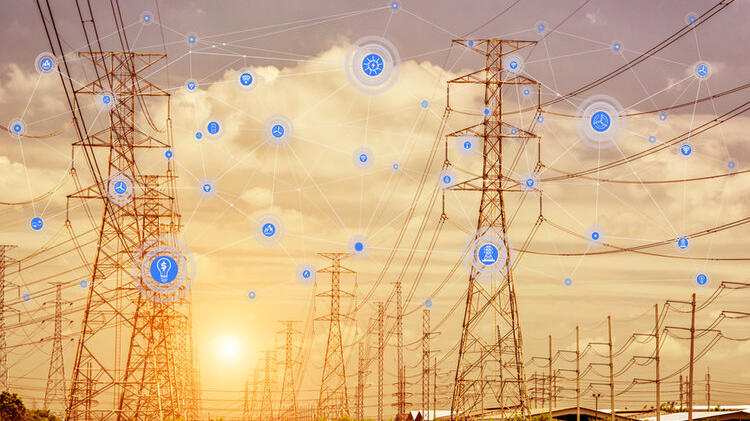 Energy Efficiency
Energy EfficiencyEnergizing Change Together: The Power of Energy Efficiency Networks
Summary
Energy Efficiency Networks (EENs) have become a key component in international climate action, with over 1,300 networks in 21 countries involving up to 20,000 companies. Germany and China account for 70% of these networks. EENs operate by allowing companies to collaborate over two to four years, setting non-binding, ambitious energy-saving targets, exchanging strategies, and monitoring implemented measures. The networks, which vary from regional to sector-specific, foster a culture of peer support and accountability, leading to more effective energy-saving actions.
Germany's Initiative Energy Efficiency Networks (IEEN) demonstrates the success of EENs, where 87 networks saved 31.3 GWh of energy and reduced 11,700 tons of CO₂ per year, exceeding their targets by 11%. About 950 companies took part, with the average company implementing 3.7 energy-saving measures. These ranged from optimizing process heating to upgrading to combined heat and power systems, contributing to Germany's goal of reducing emissions by up to 95% by 2050.
Beyond policy tools, EENs encourage a culture of continuous improvement and innovation, with benefits for large companies and SMEs alike. Different countries tailor EENs to their local context, exemplified by Switzerland's tax exemptions and Germany's emphasis on voluntary participation. This approach aligns with international climate commitments and advances a sustainable industrial future.
Open full article
Energizing Change Together: The Power of Energy Efficiency Networks
Imagine a room where representatives from different companies—big and small—come together, not to compete, but to collaborate. Their mission: discover, share, and implement ways to cut down energy use and reduce carbon emissions. This isn’t a futuristic scenario; it’s the essence of Energy Efficiency Networks (EENs), a dynamic model that’s rapidly shaping the future of industry and climate action around the globe.
Transforming the Energy Landscape: Global Momentum
Energy Efficiency Networks have quietly but powerfully embedded themselves in the global push for a cleaner, more sustainable energy system. Over the last three decades, at least 21 countries—spanning all continents except Australia—have adopted EENs. Collectively, there are more than 1,300 active and completed networks worldwide, involving an estimated 13,000 to 20,000 companies.
Germany and China lead the pack, accounting for over 70% of all networks. Germany alone has seen nearly 400 EENs bloom under its ambitious national plans, while China tops the chart with about 500 EENs. Switzerland, the United States, and Sweden are also rolling out substantial programs, each adapting the EEN model to their unique political and industrial environments.
But what exactly makes these networks so compelling? And why are governments, industry associations, and companies rallying around them?
The EEN Formula: How Collaboration Drives Results
At their core, Energy Efficiency Networks are structured, moderated communities—usually lasting two to four years—where companies regularly exchange knowledge, challenges, and best practices. Here’s how a typical network operates:
- Identifying Potential: Each participating company assesses its energy-saving opportunities and sets a non-binding, but ambitious, target.
- Regular Exchange: Professionals, both internal and external, meet to discuss strategies, bring in experts, and share lessons learned.
- Implementation & Monitoring: Companies act on chosen measures, while network moderators track progress and facilitate ongoing improvement.
These networks come in different flavors: regional clusters, sector-specific groups, and even company-internal networks for large, multi-site organizations. What they share is a culture of peer support and accountability—elements proven to accelerate the implementation of energy-saving actions compared to going it alone.
Innovations Making a Difference
Energy Efficiency Networks aren’t just about sharing ideas—they’re about turning insight into action. Let’s take Germany’s national initiative as a leading example:
- Voluntary, Yet Impactful: Launched in 2014, the Initiative Energy Efficiency Networks (IEEN) in Germany aims to unite companies in a voluntary effort, targeting substantial reductions in energy consumption and greenhouse gas emissions.
- Impressive Savings: The latest monitoring reports show that the 87 networks assessed have saved, on average, 31.3 GWh of final energy and 11,700 tons of CO₂ annually. Even more impressively, these networks have exceeded their initial targets by 11% on average.
- Widespread Participation: Almost 950 companies took part in these networks, with three-quarters implementing at least one energy-saving measure. On average, each company introduced 3.7 measures—ranging from optimizing process heat and improving building insulation to upgrading lighting and implementing combined heat and power systems.
- Diverse Approaches, Big Impacts: The range of savings is vast. While some measures—like process heat optimization and industry-specific processes—deliver large reductions, even smaller actions (like more efficient lighting) add up due to their frequency across the networks.
These results highlight not only the technical potential but also the power of collective motivation. When companies learn together, they’re more likely to overcome barriers—be it lack of expertise, uncertainty about investment, or inertia.
Shaping a Sustainable Future
So, what does this mean for the future of industry, cities, and the climate? Energy Efficiency Networks are more than a policy tool—they’re a movement that’s reshaping how organizations approach energy management:
- Accelerating Decarbonization: By systematically identifying and implementing energy-saving actions, EENs contribute directly to national and international climate goals. For example, Germany’s networks are a core part of its strategy to reduce greenhouse gas emissions by up to 95% by 2050 compared to 1990.
- Fostering a Culture of Innovation: Networks nurture continuous improvement. Companies gain access to external expertise, discover new technologies, and support each other in adopting energy management systems.
- Bridging Policy and Practice: Different countries have tailored EENs to local needs. In Switzerland, participation can lead to tax exemptions, while in Germany, the focus is on voluntary action. Each model provides lessons on balancing incentives, monitoring, and long-term engagement.
- Empowering All Sizes: While large companies make up a majority of participants, small and medium-sized enterprises (SMEs) are increasingly joining, finding value in shared knowledge and collective action.
Ready to Join the Next Generation of Energy Leaders?
Are you a student or young professional passionate about energy, sustainability, or industrial innovation? Energy Efficiency Networks offer unique opportunities to learn, connect, and make a tangible impact. Whether you’re looking to deepen your expertise or searching for ways to contribute to the climate transition, EENs are a living laboratory of ideas and solutions.
Take the next step and test your energy knowledge with the mobile quiz "Enerwhizz"!
Play now: https://enerwhizz.app/
This fast-paced, multi-lingual game lets you compete in 45-second rounds, climb leagues, complete missions, and win gems, prizes, and ET coins. It’s an engaging way to challenge yourself and become part of a growing community of energy whizzes.
In Summary
Energy Efficiency Networks are transforming the way companies approach energy and sustainability. By fostering collaboration and knowledge-sharing, they’re unlocking significant energy and emissions savings, inspiring innovation, and contributing to ambitious climate goals. Whether you’re just starting your career or looking to drive change in your organization, the EEN model offers inspiration—and a clear path forward. The energy transition is a team effort. Why not get involved?
Sources & more…
More on EEN: https://publica.fraunhofer.de/bitstreams/6c794e5c-08f4-4cbc-8a12-faf0398394e1/download
More on D2050, the underlying EU project, check via “all EEIP projects”: https://projects.ee-ip.org/#ongoing-projects
More information on the EnerWhizz mobile quiz game, check: https://www.enerwhizz.info/



